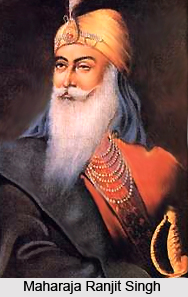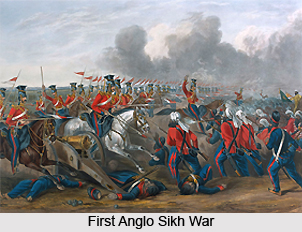 History of Jalandhar District comprises three periods - ancient, medieval and modern. According to the history of Jalandhar District, in ancient time, the district comprised the whole of the Upper Doabas from Ravi River to Sutlej River. According to the Padama Purana, the district takes its name from the demon king Jalandhara. The whole of Punjab and the area of present Jalandhar District was part of the Indus Valley Civilization. Harappa and Mohenjodaro are the sites where remains of the Indus Valley Civilization have been found extensively. The archaeological explorations made during the recent years have pushed the ancient times of Jalandhar District of Harappa period.
History of Jalandhar District comprises three periods - ancient, medieval and modern. According to the history of Jalandhar District, in ancient time, the district comprised the whole of the Upper Doabas from Ravi River to Sutlej River. According to the Padama Purana, the district takes its name from the demon king Jalandhara. The whole of Punjab and the area of present Jalandhar District was part of the Indus Valley Civilization. Harappa and Mohenjodaro are the sites where remains of the Indus Valley Civilization have been found extensively. The archaeological explorations made during the recent years have pushed the ancient times of Jalandhar District of Harappa period.
Further, the early history of Jalandhar District states that this entire district was a part of the vast areas covered under the Indus Valley Civilization during the early period of history. This civilization developed prior to the Aryan Civilization in this region. The excavations done in Jalandhar District have revealed the imprints of Harappa culture in east Punjab. The earliest historical mention of Jalandhar District occurs in the region of Kanishka. From the later half of the tenth century up to 1019 AD, the district was included in the Shahi Kingdom of Punjab and Jalandhar was an important city in the region.
As per the medieval history of Jalandhar District, Jalandhar was always the capital of Doaba which then extended to the neighbourhood of Multan Under the Mughal Emperors. In 1766 AD Jalandhar fell into the hands of the Sikh Misal of the Faizullapuria, then under Khushal Singh.
 His son Budh Singh, who succeeded him, built a masonry fort in the city, the site of which is now occupied by Killa Mohalla while several of the other leaders built forts of bricks. In 1811, Diwan Mohkam Chand was sent by Maharaja Ranjit Singh to annex the Faizullapuria possession in the Jalandhar Doaba. In the first Anglo Sikh War (1845-46 AD), there was no significant military event in Jalandhar Doaba. The army of Sardar Ranjodh Singh Majithia marched through Doaba and was joined by the troops of Ahluwalia chief. After the battle, the region between Sutlej and Beas River was ceded to the British.
His son Budh Singh, who succeeded him, built a masonry fort in the city, the site of which is now occupied by Killa Mohalla while several of the other leaders built forts of bricks. In 1811, Diwan Mohkam Chand was sent by Maharaja Ranjit Singh to annex the Faizullapuria possession in the Jalandhar Doaba. In the first Anglo Sikh War (1845-46 AD), there was no significant military event in Jalandhar Doaba. The army of Sardar Ranjodh Singh Majithia marched through Doaba and was joined by the troops of Ahluwalia chief. After the battle, the region between Sutlej and Beas River was ceded to the British.
The modern history of Jalandhar District recalls that John Lawrance was appointed commission of Jalandhar Doaba on its annexation in 1846. Cantonments were built at Jalandhar, Phillaur, Nakodar and Kartarpur. Further, railway line from Beas to Jalandhar was opened in 1869 and was completed up to Phillour by next year. The Doaba was linked to the rest of Punjab by railway bridges, constructed over Beas in 1869 and over Sutlej in 1870. With a view of stimulate political activity, the District Congress Committee was formed in the year 1917. It was affiliated to the Punjab Provincial Congress Committee. The Delegates of the District Congress Committee, Jalandhar attended the Provincial Political Conference held at Lahore in 1917. The Rowlatt Act was passed in March 1919.
Modern history of Jalandhar District also states that Khilafat Movement was started in the district in early 1920 to bring pressure upon British rulers to change their policy towards Turkey. Mahatma Gandhi extended sympathy and support to this movement. Jalandhar District was declared `Proclaimed Area` under the Seditious meetings Act. After the independence of the country, however the district was affected by communal riots and exodus of minority communities from both sides of the border, consequent upon the partition of the country.



















